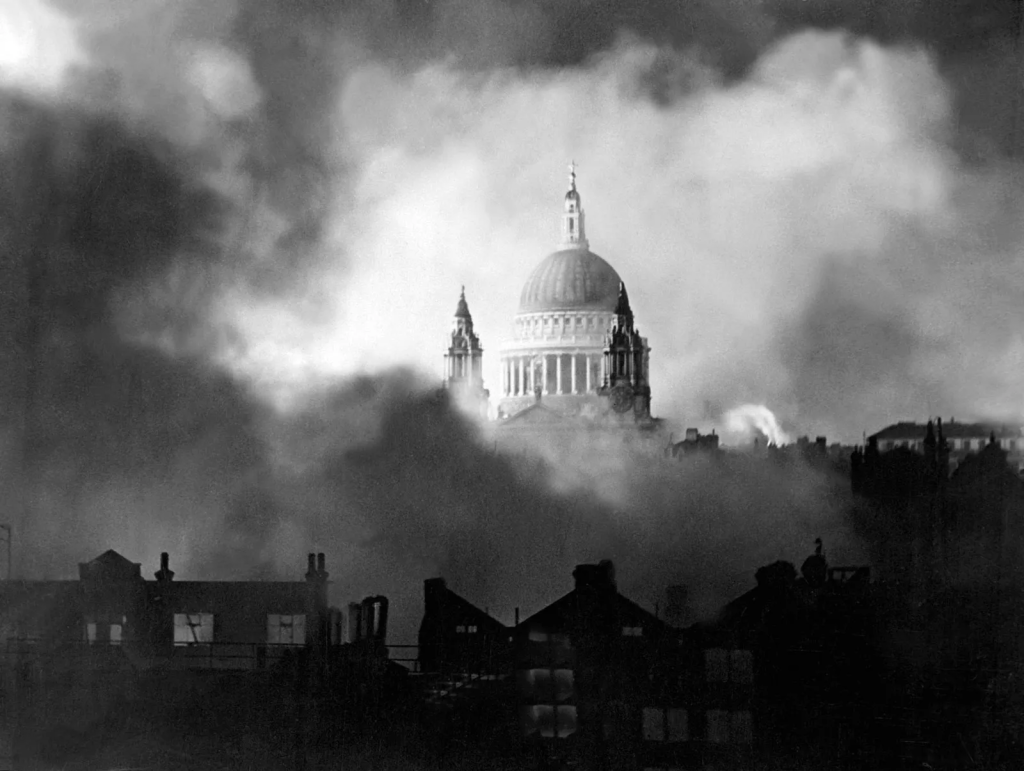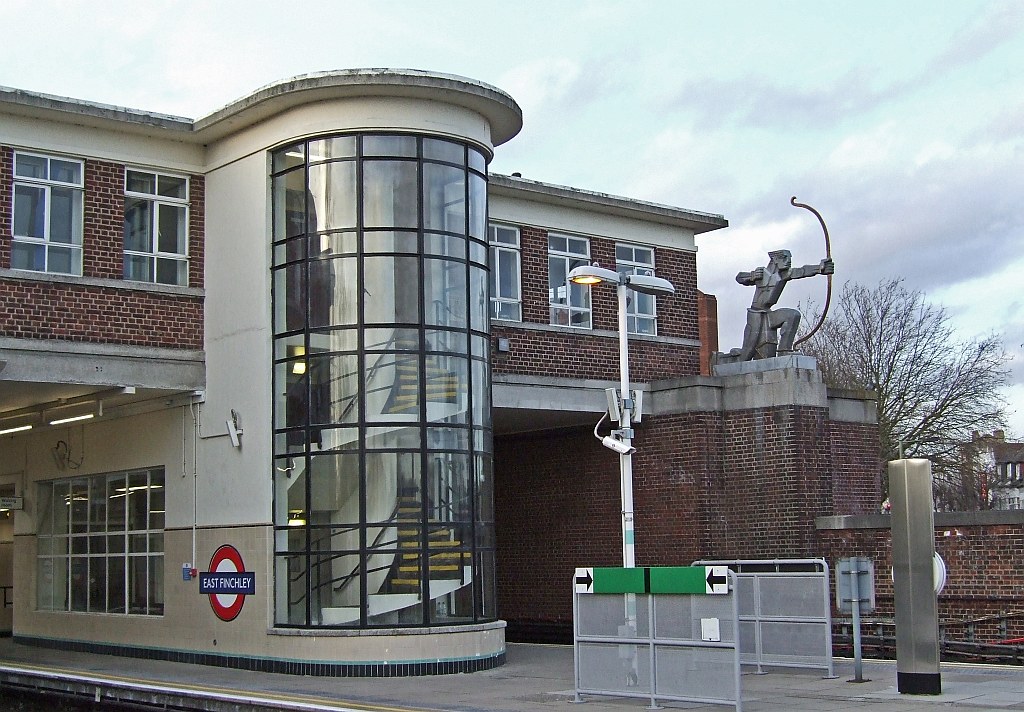Ah, the roaring 1920s! A time of jazz, flappers, and more fringe than you could shake a Charleston at. And amidst all that glitter and gin, a little something called Art Deco emerged. While our European neighbours were busy dressing themselves in head-to-toe opulence, the UK – and London in particular – seemed poised to transform into an architectural wonderland dripping in geometric patterns, sleek lines, and lavish ornamentation. But then, the world wars showed up to spoil the party.
Imagine, if you will, London as a city aglow with Art Deco splendour, rivalling the likes of Paris and New York. But thanks to the untimely interruptions of not one, but two world wars, London was forced to swap its dreams of glitzy grandeur for more… practical concerns. I mean, who has time for ornate zigzags when there are bombs to dodge?
The Party Gets Interrupted: World Wars vs. Art Deco

The Art Deco movement burst onto the scene in the 1920s, all jazz hands and optimism. Inspired by modern technology, streamlined forms, and a dash of futurism, it was all about sleekness, luxury, and a good dose of glamour. But the fun was short-lived. Along came the 1930s, with a certain unpleasantness brewing across the Channel. And just as London’s architects were perfecting their Deco doodles, the world decided to implode.
Cue World War II. Instead of adorning buildings with fancy friezes, the people of London were more concerned with things like, oh, not being obliterated. And as if one world war wasn’t enough to put a damper on the mood, the aftermath brought its own brand of gloom. With cities reduced to rubble and the economy in tatters, suddenly spending money on swanky skyscrapers didn’t seem all that reasonable. Fancy designs took a back seat to functionality. Who needed a building that looked like a Wrigley’s chewing gum wrapper when you could just use the wrapper to patch up your bomb-damaged window?
The Great Rebuild: Functionality vs. Beauty

Once the dust settled – quite literally – London had to make some tough choices. The country was broke, exhausted, and facing the not-so-small task of rebuilding itself. But it wasn’t just about rebuilding; it was about rebuilding fast. And so, gone were the dreams of a dazzling Art Deco paradise. Instead, we ended up with the dreaded “practical and affordable” – the two most depressing words in any architect’s vocabulary.
London got buildings that could withstand the weather, but they weren’t winning any beauty contests. We could have had sleek, chrome-plated facades and daring architectural statements, but instead, we got brick boxes with all the charm of a soggy biscuit.
The Art Deco Survivors of London: A Glimmer of What Might Have Been
Thankfully, a few bold beauties from the Art Deco era managed to dodge the bulldozers and bombs, standing as a reminder that London did, in fact, have a fling with fabulousness. Let’s take a stroll down memory lane and celebrate these survivors:
1. East Finchley Station: The Most Stylish Way to Catch a Train

If there’s one thing Londoners love, it’s a good moan about the Tube. But even the most jaded commuter has to admit that East Finchley Station is a bit of alright. Opened in 1939, this Northern line gem is a monument to Art Deco chic, with its curved brickwork, streamlined ticket hall, and a statue of a mysterious archer that looks like it’s aiming for your Oyster card.
It’s like someone thought, “Why should waiting for the Tube be a miserable experience? Let’s make it glamorous!” And thank goodness they did because for a moment, you almost forget that your train is delayed.
2. John Keble Church, Mill Hill: Heavenly and Oh-So-Deco

Churches are typically all about the Gothic arches, but John Keble Church in Mill Hill took a different route. Built in 1936, it’s a vision of Art Deco splendour with its striking brick tower and geometric windows. Honestly, it’s the kind of church that makes you want to confess your sins just so you can spend more time inside.
You have to admire the audacity of creating a place of worship that looks like it might double as a glamorous jazz lounge on the weekends. Who says faith and fabulousness can’t go hand in hand?
3. Wrigley’s Factory, Wembley: Where Chewing Gum Met Chic

Ah, the Wrigley’s Factory in Wembley. Where peppermint dreams came to life in the most stylish way possible. Built in 1927, this factory wasn’t just cranking out chewing gum; it was an Art Deco statement piece with its bold, geometric façade and sleek lines. It almost made you want to quit your job and work in a chewing gum factory. Almost.
Sadly, it’s no longer with us, but its memory lives on – because nothing says “artistic masterpiece” quite like a stick of spearmint.
4. Daily Express Building: News Never Looked So Good
Who knew that a newspaper office could be this sexy? The Daily Express Building on Fleet Street, completed in 1932, is an Art Deco dream come true. Shiny black Vitrolite and chrome-clad walls? Check. Curved glass and stainless steel windows? Double check. It’s as if the building itself was saying, “Read the news, but make it fashion.”
Today, it stands as a reminder that there was once a time when even journalism had a sense of style. And while the headlines may have been bleak, at least the building itself was a beacon of chic.
5. Battersea Power Station: Electrifying Elegance

Last but certainly not least, the pièce de résistance of London’s Art Deco legacy – Battersea Power Station. Built in the 1930s, this behemoth of a building isn’t just an icon; it’s an icon with swagger. Those four imposing chimneys? Pure Art Deco drama. The sleek brickwork? Positively electrifying.
Though it spent years in a state of dereliction, Battersea Power Station has been brought back to life, proving that you can’t keep a good Deco down. It’s now home to shops, restaurants, and that all-important sense of “what could have been” for London.
A Longing for What Could Have Been
So, there you have it. London’s flirtation with Art Deco was brief but brilliant, leaving behind a handful of glittering gems that hint at the city that might have been. If only the world wars hadn’t rudely interrupted our plans, we might have had an Art Deco paradise to rival any European city. Instead, we’re left with brick boxes and grey buildings – but at least we’ve got a few shining examples of what happens when beauty triumphs over functionality.
And maybe, just maybe, one day we’ll realise that a little glamour never hurt anyone. Until then, we can gaze longingly at the East Finchley Station, Wrigley’s Factory, or the Battersea Power Station and dream of the London that almost was.












